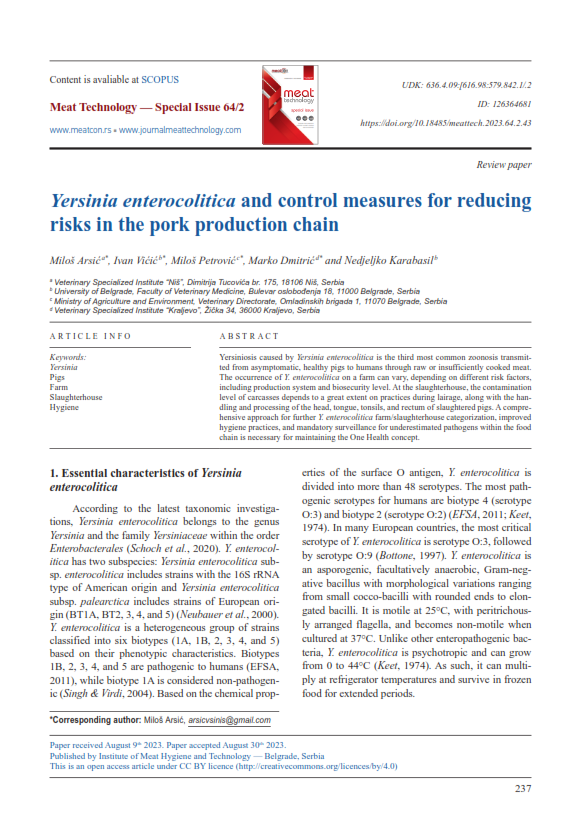Yersinia enterocolitica and control measures for reducing risks in the pork production chain
Abstract
Yersiniosis caused by Yersinia enterocolitica is the third most common zoonosis transmitted from asymptomatic, healthy pigs to humans through raw or insufficiently cooked meat. The occurrence of Y. enterocolitica on a farm can vary, depending on different risk factors, including production system and biosecurity level. At the slaughterhouse, the contamination level of carcasses depends to a great extent on practices during lairage, along with the handling and processing of the head, tongue, tonsils, and rectum of slaughtered pigs. A comprehensive approach for further Y. enterocolitica farm/slaughterhouse categorization, improved hygiene practices, and mandatory surveillance for underestimated pathogens within the food chain is necessary for maintaining the One Health concept.





